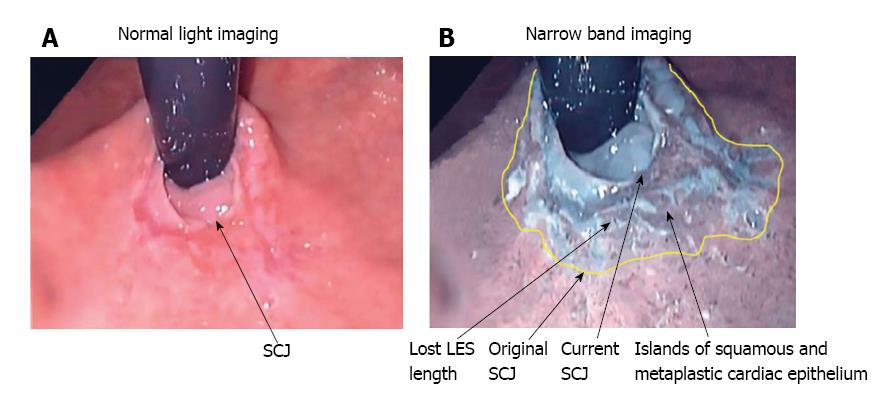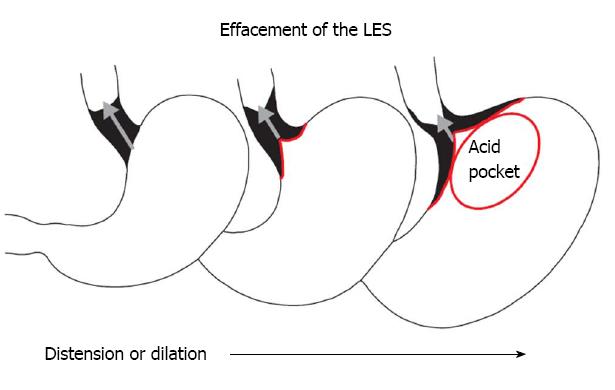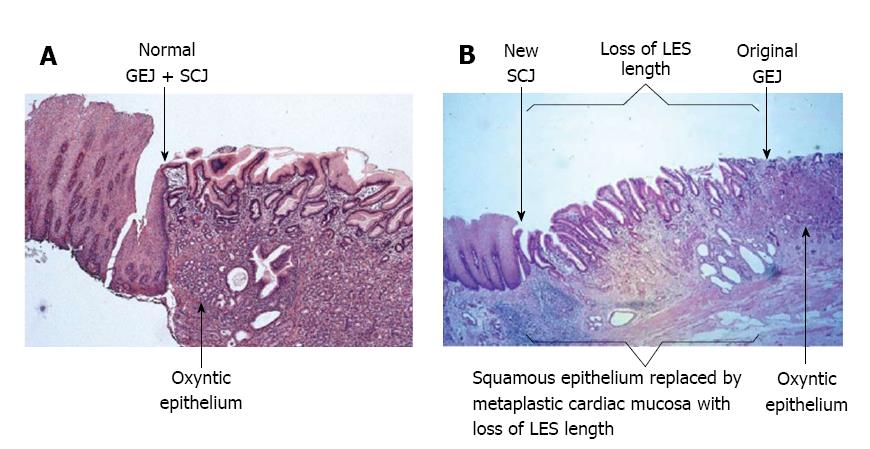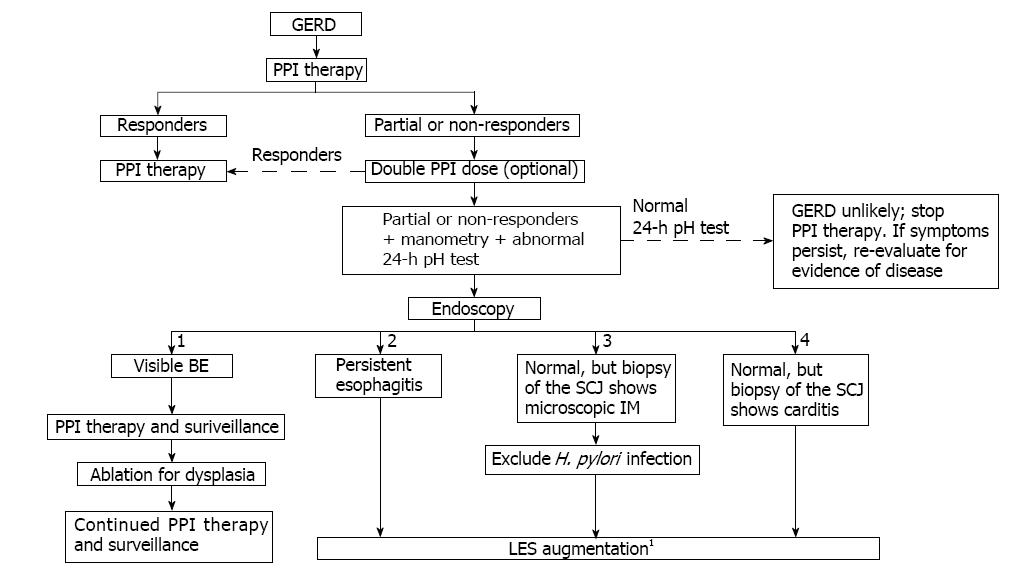Copyright
©The Author(s) 2018.
World J Gastrointest Endosc. Sep 16, 2018; 10(9): 175-183
Published online Sep 16, 2018. doi: 10.4253/wjge.v10.i9.175
Published online Sep 16, 2018. doi: 10.4253/wjge.v10.i9.175
Figure 1 Retroflex endoscopic view of the squamocolumnar junction in advanced gastroesophageal reflux disease.
A: Normal white light image displays a slightly irregular SCJ with normal squamous epithelium extending up the esophagus; B: Narrow band image shows multiple islands of squamous epithelium below the SCJ, surrounded by newly formed metaplastic cardiac epithelium. The splayed out original SCJ (indicated by the yellow line), and damaged portion of the LES between the original SCJ and the current SCJ, take on the appearance of stomach. Loss of esophageal muscle due to inflammation results in a reduction in the abdominal length of the LES and loss of the LES barrier function. Images used with permission from Dr. Peters, Case Western University, Cleveland, OH, United States. GERD: Gastroesophageal reflux disease; LES: Lower esophageal sphincter; SCJ: Squamocolumnar junction.
Figure 2 Effacement of the lower esophageal sphincter as a result of gastric distension or dilation.
Exposure of the squamous mucosa covering the effaced portion of the LES to gastric juice results in inflammation, the formation of metaplastic cardiac mucosa, and progressive loss of LES length. The red line represents the squamous epithelial covering of the effaced portion of the LES (in black) as it is taken up by the expanding gastric fundus. LES: Lower esophageal sphincter.
Figure 3 The histology of the squamo-oxyntic gap.
A: The normal junction of the esophagus and stomach is the abutment of the proximal limit of the gastric oxyntic epithelium and the distal limit of the squamous epithelium; B: Squamo-oxyntic gap: Squamous epithelium is replaced by metaplastic cardiac mucosa resulting in loss of LES length, as shown by manometry. Images provided by Dr. Parakrama Chandrasoma. GEJ: Gastroesophageal junction; GERD: Gastroesophageal reflux disease; LES: Lower esophageal sphincter; SCJ: Squamocolumnar junction.
Figure 4 Proposed algorithm for the treatment of patients with progressive gastroesophageal reflux disease.
Patients who do not respond to PPI therapy and who have an abnormal 24-h esophageal pH should undergo endoscopy. Patients can be stratified into four groups following endoscopy: (1) patients with visible BE; (2) patients with persistent esophagitis; (3) patients with a normal endoscopy who have microscopic IM of the SCJ; and (4) patients with a normal endoscopy who have carditis at the SCJ. Patients in groups (2), (3) and (4) should undergo manometric assessment of LES function; those with a defective LES may be candidates for LES augmentation. 1If more than 2 permanently defective LES components consider Nissen fundoplication. BE: Barrett’s esophagus; GERD: Gastroesophageal reflux disease; LES: Lower esophageal sphincter; IM: Intestinal metaplasia; PPI: Proton pump inhibitor; SCJ: Squamocolumnar junction.
- Citation: Labenz J, Chandrasoma PT, Knapp LJ, DeMeester TR. Proposed approach to the challenging management of progressive gastroesophageal reflux disease. World J Gastrointest Endosc 2018; 10(9): 175-183
- URL: https://www.wjgnet.com/1948-5190/full/v10/i9/175.htm
- DOI: https://dx.doi.org/10.4253/wjge.v10.i9.175
















